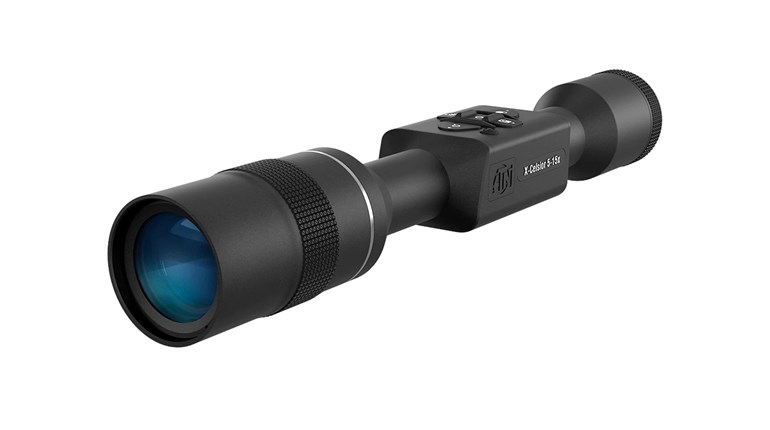
Two problems must be overcome before you can hit a target in low light: positively identifying it and seeing your sights clearly enough to aim. The first half of that equation gets fairly steady coverage in these pages in the form of white-light and night-vision-device gear reviews and tutorials. I will not delve further into either topic except to reiterate that if you cannot see your target well enough to confirm it needs to be shot, seeing optic or sights is a moot point. Once you successfully get over the target ID hurdle, you can proceed to the limited-visibility aiming part of the problem.
I am old enough that when speaking about military topics, beginning an anecdote with the words “Back in my day” actually refers to something from the last century. Even so, the equipment and techniques used when I wore the “mosquito wings” of an Army Private often seem better-suited to the 1880s than the 1980s.
Night shooting in particular had not advanced very far beyond the days of throwing torches toward an outer perimeter for illumination. You had to wear three or more stripes on your collar to rate a pair of AN/PVS-5 night-vision goggles back then. The one exception in each rifle squad was the poor guy who had to lug around an AN/PVS-4 night scope in his rucksack all day. But, even he needed some amount of moon or starlight to see much beyond a few meters at night. The rest of us simply flipped our rear sights to their largest apertures and hoped the M203 gunners had enough parachute flares to get us through any trouble.
The only iron-sight improvements available in those days were a dab of luminous paint on one’s front-site post and drilling out one of the M16’s rear apertures to the largest-possible size. Both options had serious limitations and also required one to stay in the good graces of the company armorer. By the time I retired from that life, we had many more electro-optical and mechanical options, not to mention the best night-vision and thermal equipment in the world. Thankfully, those capabilities have advanced further and proliferated down to most of our ground-based warfighters today.
Affordable night-vision gear has been available on the commercial market long enough that it is no longer an uncommon rifle accessory. Likewise, many good electro-optical solutions exist to help us aim our long guns in low light, including red-dot sights, low variable-powered scopes and visible lasers. But, if your budget or rifle configuration dictates a solid-state backup or a simpler primary solution, some form of iron or backup sight (BUS) is a good place to target your limited-visibility enhancements.
Traditional iron sights work well when a light source is shining on a target, but fall short in the low light of dawn/dusk and moon or starlit conditions. Several open-sight options bring more light into the solution, but only tritium lamps provide 24/7 power. While more commonly seen on handguns, tritium sight options for rifles have actually been around for a long time. Somehow, I got my hands on a tritium front-sight post for my Army-issued CAR-15 back in the mid-1990s.
I transferred that little gem from one gun to another over the years until it no longer provided any useful glow. That fading was due to the tritium element aging past its “half-life” of approximately 12 years. At that point, the element’s molecular decay accelerated, rapidly weakening the phosphorescent glow. Keep this in mind if you spring for the more-expensive tritium sight option. Depending on how long they sat on a distributor’s shelf, they may only have a few useful years left before they begin to dim.
The bigger the opening used for aiming—whether a riflescope objective or a rear peep sight—the more light that can pass through to help the eye see a brighter target image. Accordingly, large-aperture ghost rings simplify the process of finding and centering a front sight over a dimly lit target. A very wide notch or V-type rear sight also works well for the same reason. Increasing a front sight’s profile is the other half of the battle and is often accompanied by bright coloring to help with quick acquisition. One downside to larger sights is that they are not exactly well-suited to precision work.
From a pure volume of options standpoint, XS Sights is a hard company to beat for high-visibility, aftermarket rifle sights. It offers ghost-ring and wide, V-type rear sights and various front-sight profiles for a huge array of rifles, many with tritium options. Whether your go-to long gun is a lever, bolt, single-shot or semi-automatic, chances are good that XS has a ghost-ring option for you.
XS also manufactures a pair of fixed, 45-degree offset sights, again with or without tritium. At just a hair lighter than 5 ounces per set, these low-profile BUS mount to Picatinny rails, feature a shallow, wide “V” rear and large-dot front post that is quick to acquire. I recently discovered that I can no longer see my current BUS front post at all, so a set of XS Sights’ 45-degree offset sights will be replacing my flip ups very soon.
Another product that may be useful in low-light situations comes from SeeAll Open Sights in the form of its MK2 Tritium Night Sight. The MK2 mounts on a rifle’s rail and incorporates all aiming references into a single, 2.7-inch long, .75-inch-high unit. I have not tried one of these sights, but I can see the utility of such a small, ruggedized and open design for low-light applications.
Old-school tricks for aiding your natural night vision are still applicable today. But, scanning by eye in a figure-eight pattern and looking off to one side of an object to see it more clearly in low light will only get you so far. Ensuring that your sights are up to the task of proper alignment against a dimly lit, threat target is an important part of enhancing your rifle-shooting capabilities.



































